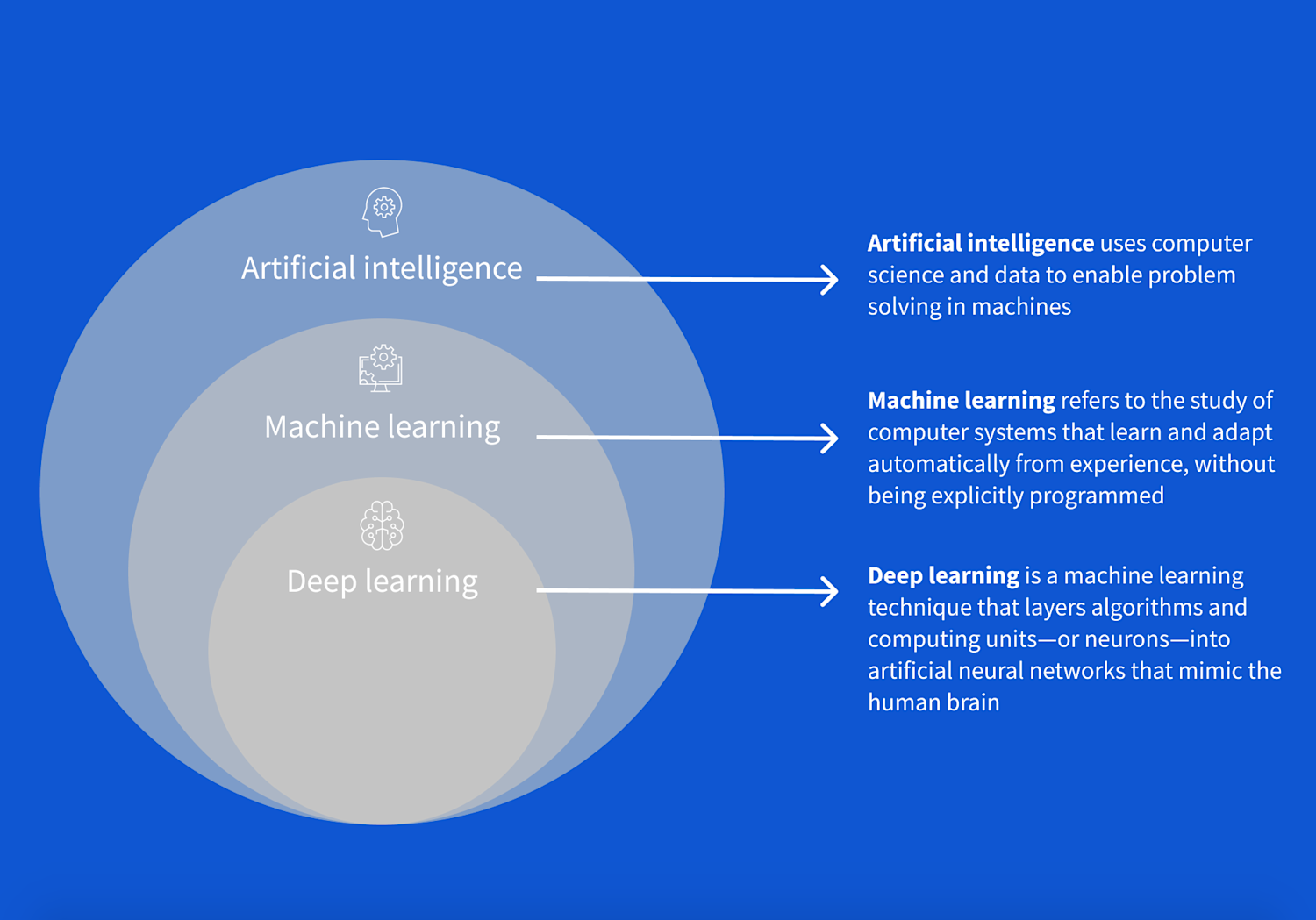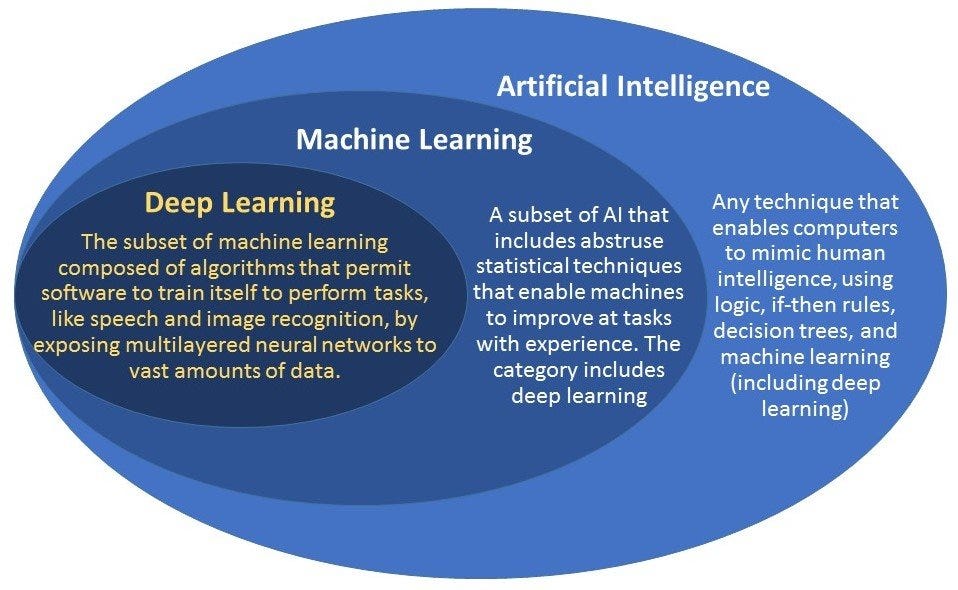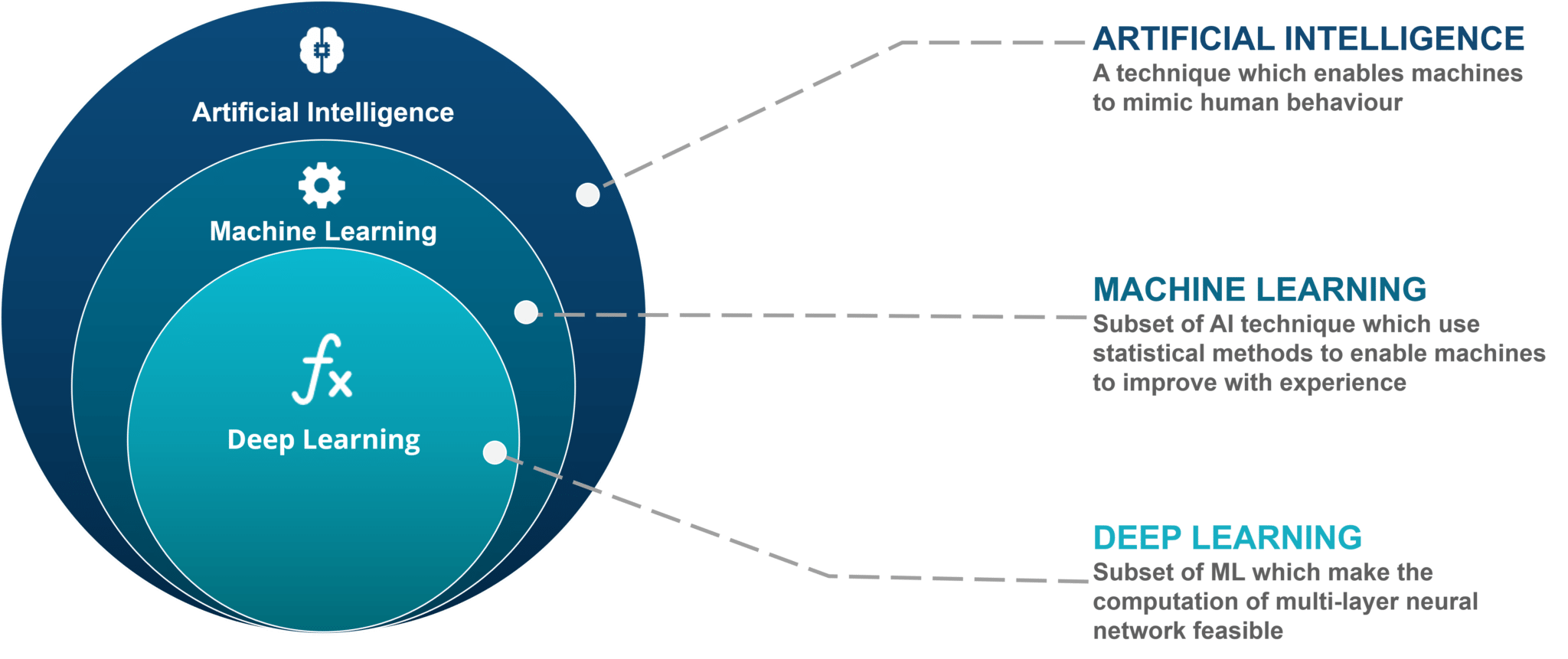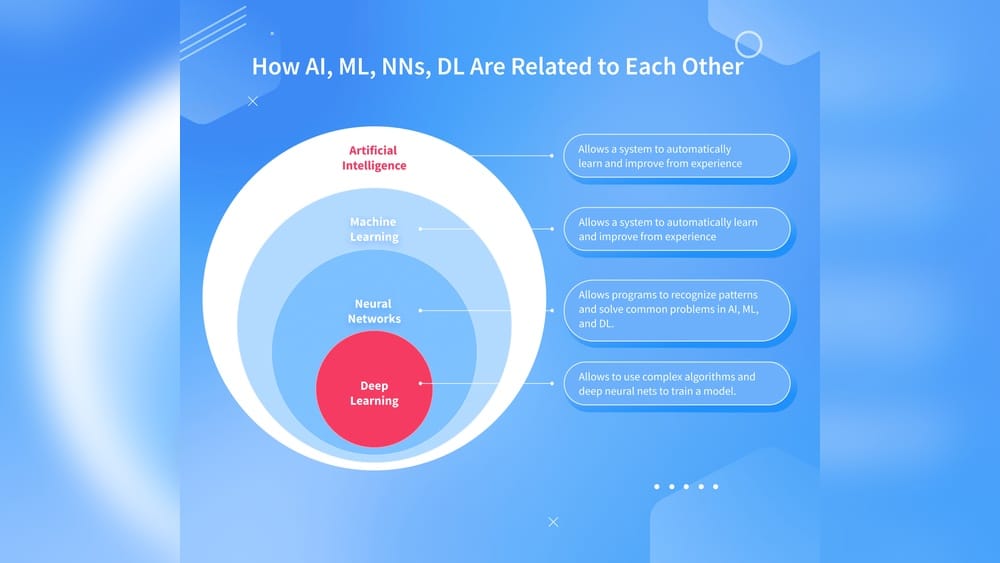Ever wonder how Deep Learning Machine Learning AI nails voice recognition, song picks, and autonomous driving? Get crystal-clear differences, real-life examples, and future-proof insights that could revolutionize your life or business—start now!
But what exactly makes them different, and how can they impact your life or business? You’ll discover clear explanations and real-world examples that break down complex ideas into simple terms. By the end, you’ll see why mastering these concepts could be a game changer for your future.
Ready to dive in? Let’s get started.
Deep Learning Basics
Deep learning is a key part of artificial intelligence and machine learning. It uses layers of algorithms called neural networks. These networks try to mimic how the human brain works.
This technology helps computers recognize patterns and make decisions. It is behind many modern AI tools like voice assistants and image recognition.
How Deep Learning Works
Deep learning builds models with many layers of nodes. Each layer processes information and passes it to the next. The model learns by adjusting connections between nodes. This process is called training. It improves the model’s accuracy over time.
The model uses data to identify features and create rules. These rules help the model predict or classify new data.
Data Requirements
Deep learning needs large amounts of data to work well. More data means better learning and more accurate results. This data must be clean and well-organized. The quality of data affects the model’s performance greatly.
Without enough data, the model may give poor or biased results. Data diversity also helps the model handle different situations.
Complex Patterns And Correlations
Deep learning finds complex relationships in data that are hard for humans to see. It can detect subtle patterns and connections. This ability allows deep learning to solve tough problems in many fields.
It handles non-linear patterns well, unlike simpler models. This means it can understand more complicated data structures. This strength makes deep learning useful for tasks like speech recognition and medical diagnosis.
Machine Learning Essentials
Machine learning forms the foundation of artificial intelligence. It enables computers to learn from data and improve over time without explicit programming. Understanding its basics helps grasp how AI systems function.
This section covers core concepts, data needs, and common algorithms. Each part explains important elements in simple terms to help beginners.
Core Concepts
Machine learning uses data to find patterns and make decisions. It involves training a model on examples to predict outcomes. Key ideas include features, labels, and models.
Features are the inputs, like age or income. Labels are the outputs, such as “yes” or “no” decisions. Models are the rules that link features to labels.
Data Needs Compared To Deep Learning
Machine learning requires less data than deep learning. It can work well with smaller datasets and simpler problems. Deep learning needs vast amounts of data to recognize complex patterns.
Machine learning models are faster to train and need less computing power. They suit tasks where data is limited or easier to collect.
Common Algorithms
Several popular algorithms power machine learning tasks. Linear regression predicts values using a straight line. Decision trees split data into branches for choices.
Support vector machines create boundaries to separate classes. K-nearest neighbors classify data based on closeness to known points. These algorithms are easy to understand and apply.
Artificial Intelligence Types
Artificial Intelligence (AI) comes in different types. Each type varies in complexity and ability. Understanding these types helps us see how AI evolves and functions in daily life.
The four main types of AI are reactive machines, limited memory, theory of mind, and self-aware AI. The first two types exist today, while the last two remain theoretical. These categories show AI’s growth from simple tasks to complex thinking.
Reactive Machines
Reactive machines are the simplest form of AI. They do not store past experiences or learn from them. These machines respond only to current inputs. Their actions stay the same each time they face the same situation.
For example, IBM’s Deep Blue chess computer is a reactive machine. It analyzes the board and makes moves but cannot remember past games.
Limited Memory Systems
Limited memory AI can use past information for a short time. It stores recent data to make better decisions. This type of AI improves by learning from previous experiences.
Self-driving cars use limited memory AI. They observe other vehicles’ movements and adjust their driving accordingly.
Theory Of Mind Ai
Theory of mind AI is still a concept, not reality. It would understand human emotions, beliefs, and intentions. Such AI could read social cues and interact like humans do.
This type could change how machines and people communicate. It aims to grasp feelings and mental states.
Self-aware Ai
Self-aware AI is the most advanced and theoretical type. It would have consciousness and self-awareness. This AI would understand its own existence and thoughts.
Such machines could think independently and have emotions. This level of AI remains a goal for the future.

Credit: www.coursera.org
Comparing Ai, Ml, And Deep Learning
Understanding the differences between Artificial Intelligence (AI), Machine Learning (ML), and Deep Learning is key to grasping modern technology. These terms often confuse many people. Each has unique features and uses. This section will compare them clearly to help you see how they differ and connect.
Scope And Capabilities
AI is the broadest concept. It means machines that mimic human thinking and actions. Machine Learning is a part of AI. It allows computers to learn from data and improve over time. Deep Learning is a subset of Machine Learning. It uses large neural networks to handle complex problems. AI covers simple rule-based systems to advanced learning models. ML focuses on finding patterns in data. Deep Learning can recognize images, speech, and language with high accuracy.
Data Dependency
AI systems can work with or without data, depending on their design. Machine Learning needs data to learn patterns and make predictions. The more data ML receives, the better it performs. Deep Learning requires huge amounts of data. It trains many layers of neural networks to understand details. Without enough data, deep learning models may fail or give poor results. Data quality also matters for all three, as bad data can cause errors.
Application Differences
AI applications include chatbots, expert systems, and robotics. Machine Learning powers email filters, recommendation engines, and fraud detection. Deep Learning excels in voice assistants, image recognition, and autonomous driving. AI may use fixed rules or learning methods. ML adapts based on new data but often needs human help to improve. Deep Learning works best with complex, high-dimensional data and minimal human intervention. Each technology fits different tasks depending on complexity and data needs.
Applications In Real World
Deep learning, machine learning, and AI are no longer just concepts in labs. They are part of many real-world solutions. These technologies help solve complex problems by learning from data. Their applications span different industries, improving lives and work.
Healthcare Innovations
AI analyzes medical images quickly and accurately. It helps doctors detect diseases early. Machine learning predicts patient risks by studying health records. Deep learning aids in drug discovery by modeling molecular structures. These tools reduce errors and speed up treatments. They also support personalized medicine tailored to each patient.
Autonomous Vehicles
Self-driving cars use AI to understand their surroundings. Sensors and cameras feed data to deep learning models. These models make decisions like braking or steering. Machine learning helps improve navigation by learning from past trips. AI increases road safety by detecting obstacles and pedestrians. It aims to reduce accidents and traffic jams.
Smart Assistants
Voice-activated assistants like Siri or Alexa rely on AI. They understand and respond to spoken commands using natural language processing. Machine learning helps them improve with each interaction. Deep learning enables better speech recognition and context understanding. These assistants manage tasks, answer questions, and control smart devices. They make daily life easier and more efficient.
Industrial Automation
AI controls robots and machines in factories to boost productivity. Machine learning predicts equipment failures before they happen. Deep learning optimizes supply chain management and quality control. These systems reduce downtime and lower costs. Automation powered by AI improves precision and safety. It helps industries meet growing demand without sacrificing quality.
Future Trends In Ai Technology
The future of AI technology promises exciting changes. Deep learning and machine learning continue to evolve. These advances push AI closer to human-like intelligence. As AI grows smarter, new trends emerge. These trends will shape industries and daily life. Understanding these developments helps prepare for what lies ahead.
Advancements In Self-aware Ai
Self-aware AI represents the highest level of artificial intelligence. It would have its own consciousness and understanding. Today, it remains a theoretical concept. Researchers aim to create machines that know their existence. Such AI could improve decision-making and creativity. Progress in this area depends on breakthroughs in neuroscience and computing power.
Ethical Considerations
AI raises important ethical questions. Privacy and data security are top concerns. Bias in AI systems can cause unfair results. Developers must ensure transparency and fairness. Laws and guidelines are needed to govern AI use. Ethical AI builds public trust and supports safe innovation.
Impact On Society And Economy
AI will transform jobs and industries worldwide. Some roles may disappear while new ones appear. Automation boosts productivity but may also increase inequality. Education systems must adapt to prepare workers for change. AI can improve healthcare, transportation, and energy sectors. Balancing benefits and challenges is vital for society’s future.
Learning Resources
Learning about Deep Learning, Machine Learning, and AI requires good resources. Quality materials guide you through complex ideas step-by-step. They help build strong foundations and improve skills steadily.
Choosing the right learning resources saves time and increases understanding. Here are some effective options for all learners.
Online Courses
Online courses offer structured lessons from experts. They cover basics to advanced topics with videos and quizzes. Platforms like Coursera, edX, and Udacity provide courses made by top universities and companies. These courses often include hands-on projects to practice skills. Many courses allow learning at your own speed.
Books And Tutorials
Books explain concepts in detail and provide examples. Titles like “Deep Learning” by Goodfellow or “Machine Learning for Dummies” are popular. Tutorials on websites and blogs break down topics into simple steps. They often include code samples for practice. Reading books and following tutorials together helps reinforce knowledge.
Communities And Forums
Communities bring learners together to share ideas and solve problems. Forums like Stack Overflow, Reddit’s r/MachineLearning, and AI-focused Discord servers are useful. Members ask questions, share projects, and offer advice. Joining these groups keeps you updated on new trends and tools. Engaging with others boosts motivation and learning speed.

Credit: medium.com

Credit: www.edureka.co
Read More : What Is a Chatbot: Unlock Smarter Customer Service Today
Frequently Asked Questions
What Is Machine Learning And Deep Learning In Ai?
Machine learning enables AI to learn patterns from data and make decisions. Deep learning uses neural networks for complex tasks requiring large data.
What Are The 4 Types Of Ai?
The four types of AI are reactive machines, limited memory, theory of mind, and self-aware AI. Reactive machines lack memory. Limited memory AI uses past data. Theory of mind AI understands emotions and beliefs. Self-aware AI possesses consciousness and self-awareness.
Is Chatgpt Machine Learning Or Deep Learning?
ChatGPT uses deep learning, a subset of machine learning, to understand and generate human-like text based on large data.
What Is Ai Vs Ml Vs Dl Vs Generative Ai?
AI is the broad science of creating intelligent machines. ML uses data to train algorithms. DL is a subset of ML with neural networks. Generative AI creates new content like text or images.
Conclusion
Deep learning, machine learning, and AI shape our technology today. Each has unique strengths and uses. Machine learning handles simpler tasks with less data. Deep learning works best with large data and complex problems. AI continues to grow, aiming to mimic human thinking.
Understanding these basics helps us see their role clearly. These technologies impact many fields, from healthcare to finance. Staying curious about AI keeps us prepared for future changes. The journey of learning about AI never truly ends.



